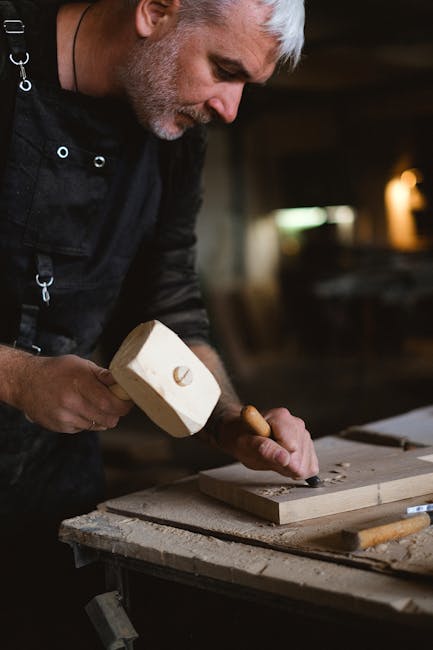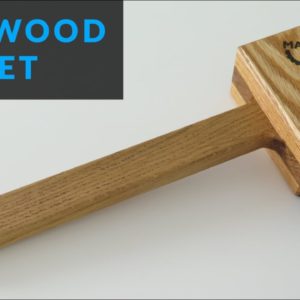Hi everyone, I’m Dinis and this is my channel DMaker. In today’s video I will show you how to make a simple
wood mallet from small scraps of oak. Stay tuned and don’t miss the end of the video where I’ll
explain what I did to make one side of the mallet softer. For this project I use two pieces of oak,
that are leftovers from my house staircase. I start by making the main part by drawing its shape
in the wider piece of oak. The total length including the handle will be 36cm. I drill two holes with a forstner bit to create a round
connection between the handle and the mallet head. Next, I cut piece to shape using the bandsaw. Since one side of the boards has a dark stain,
I sand it down with the orbital sander. The excess is removed with a chisel for further sanding. Using the main part of the mallet as a template, I outline
the shape of the head pieces and cut them to shape.
I sand all the parts carefully on a flat surface,
especially on the side that will be glued, so that the parts are perfectly glued together. And again, using a finer grit sandpaper. Then I round the edges of the handle in the router
using a round over bit. Now it’s time to glue the three parts together,
clamp it down and leave it overnight to dry. I sand most of the surfaces in the
disc sander to make them flush. Then I sand it by hand in the rest of the mallet.
Finally, a last hand sanding with 240 grit sandpaper
to make it smoother. After all the sanding, I use the router with a
chamfer bit to chamfer all the edges. I use my branding iron to put my logo. If you want to know how to make a branding iron click on
the link above and check out my video on how to make one. I decided to use a sheet of natural leather glued to
one side of the mallet in order to make it softer, so that I can use the
mallet not worrying about damaging the surfaces.

For gluing the leather to the wood, I use contact glue,
also known as cobbler’s glue. After approximately 10 minutes, when the glue is dry
to the touch, the parts can be fixed together. Now, with a new blade, I trim the excess leather, and
try to keep the same angle as the chamfer of the mallet. To finish, I apply a coat of linseed oil to protect
and enhance that beautiful oak grain. I think the final result looks pretty good, and I really think that using the leather on one side of the
mallet will be much better to avoid damaging the surfaces.
Thanks for watching and If you like the video please
consider subscribing, and remember: you can BUILD IT!.

